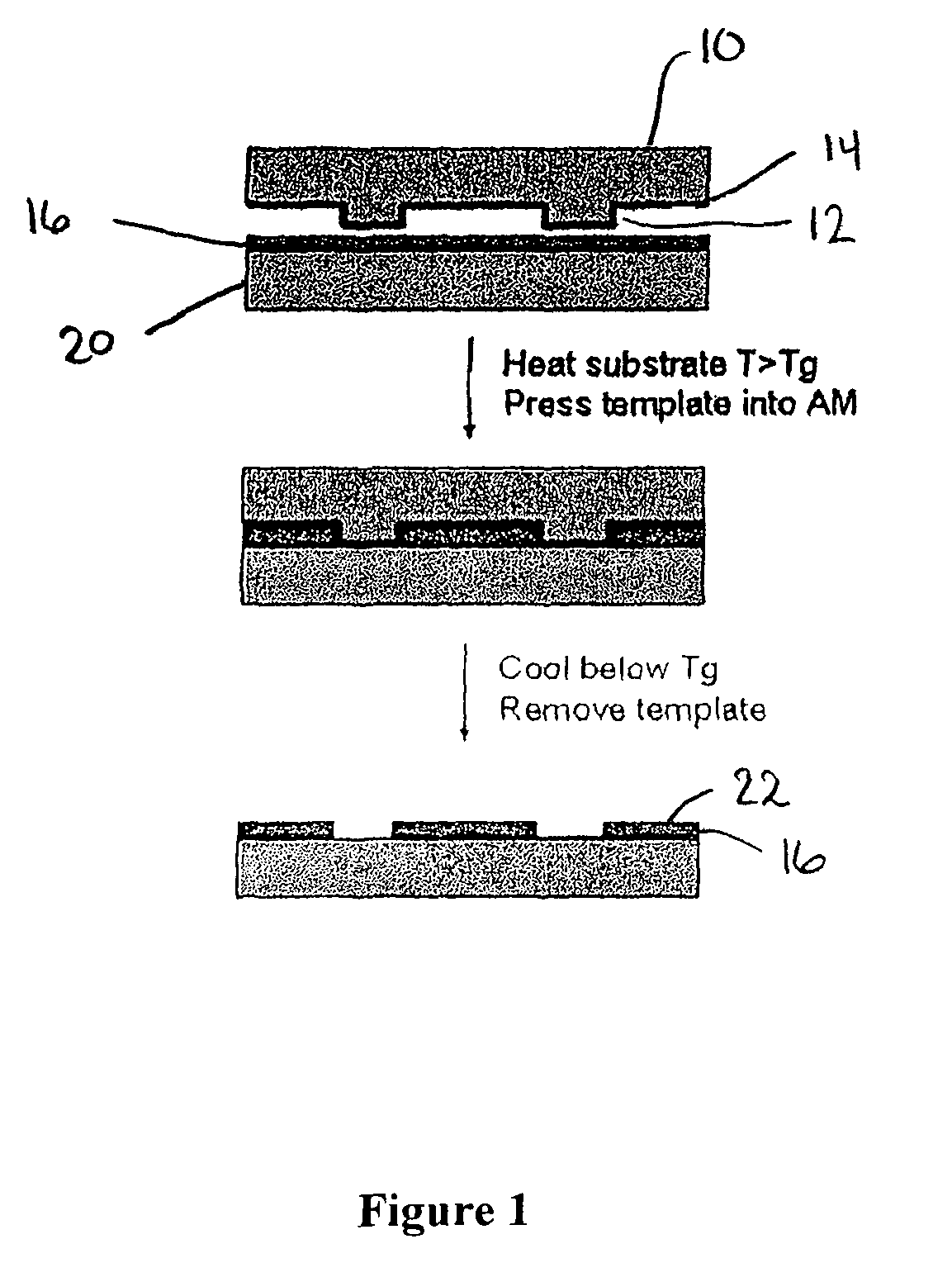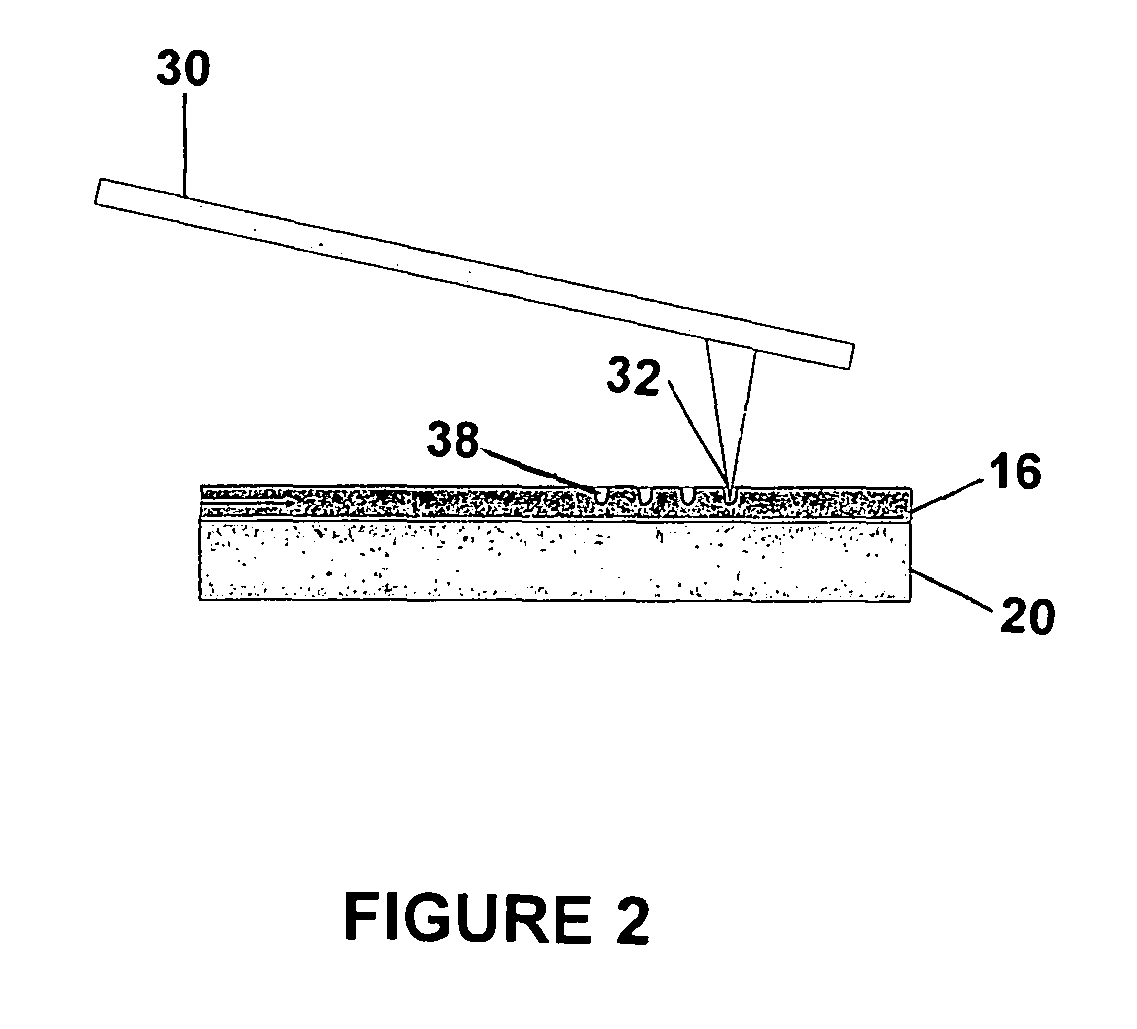Method for imprinting and erasing amorphous metal alloys
a technology imprinting, which is applied in the field of imprinting and erasing amorphous metal alloys, can solve the problems of reducing the mechanical properties of amorphous metal alloys, limiting the processing time of hot-forming operations, and reducing the superior properties of alloys
- Summary
- Abstract
- Description
- Claims
- Application Information
AI Technical Summary
Benefits of technology
Problems solved by technology
Method used
Image
Examples
Embodiment Construction
[0059]In one embodiment, the present invention relates generally to a method of imprinting microfeatures or nanofeatures into an amorphous metal alloy layer, the method comprising the steps of:[0060]a) heating an amorphous metal alloy layer to a temperature within a supercooled liquid region of the amorphous metal alloy to soften the amorphous metal alloy layer;[0061]b) transferring a pattern into the softened amorphous metal alloy layer; and[0062]c) cooling the amorphous metal alloy to a temperature below the super cooled liquid temperature region (which temperature is also below the glass transition temperature of the amorphous metal alloy) to resolidify the amorphous metal alloy layer.
[0063]In one embodiment of the invention, the step of transferring the pattern into the softened amorphous metal alloy layer comprises:[0064]a) pressing a mold having a desired pattern disposed thereon into the softened amorphous alloy layer to transfer the pattern into the amorphous softened metal ...
PUM
| Property | Measurement | Unit |
|---|---|---|
| glass transition temperature | aaaaa | aaaaa |
| glass transition temperature | aaaaa | aaaaa |
| erasing time | aaaaa | aaaaa |
Abstract
Description
Claims
Application Information
 Login to View More
Login to View More - R&D
- Intellectual Property
- Life Sciences
- Materials
- Tech Scout
- Unparalleled Data Quality
- Higher Quality Content
- 60% Fewer Hallucinations
Browse by: Latest US Patents, China's latest patents, Technical Efficacy Thesaurus, Application Domain, Technology Topic, Popular Technical Reports.
© 2025 PatSnap. All rights reserved.Legal|Privacy policy|Modern Slavery Act Transparency Statement|Sitemap|About US| Contact US: help@patsnap.com



